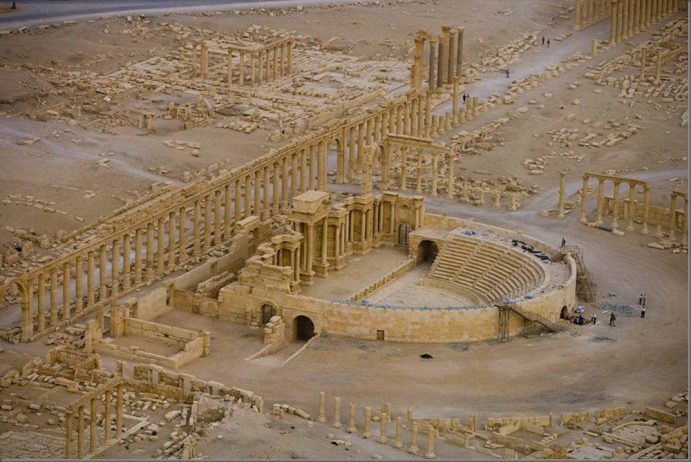The Roman Theater of Palmyra is located in the Syrian Desert. The incomplete theater dates back to the 2nd century CE Severan period. And remains have since been restored and in recent years have seen life begin to seep back into the theater with an annual calendar of events. The Roman Theater of Palmyra is now taking places such as the Annual Silk Route Festival and the Palmyra Festival. During these festivals, it’s a very exciting time for foreigners to visit Palmyra, as they are encouraged to join in the festivities.
The theater was constructed in the center of a semicircular colonnaded piazza which opens up to the South Gate of Palmyra. The piazza was situated to the southwest of the main colonnaded street. The uncompleted cavea is 92 meters in diameter and contains only an ima cavea, the lowest section of the cavea, directly surrounding the orchestra. The ima cavea is organized into eleven cunei of twelve rows each and faces north-northeast towards the cardo maximus.
The theater’s aditus maximus, its main entrance, is 3.5 meters in width and leads to a stone-paved orchestra with a diameter of 23.5 meters. The orchestra is bounded by a circular wall with a diameter of 20.3 meters. The proscenium wall is decorated with ten curved and nine rectangular niches placed alternately. The stage measures 45.5 by 10.5 meters and is accessed by two staircases.
The scaenae frons had five doors and the main entrance, or regia, built-in broad curved niche; two guest doors on either side of the regia, or hospitalis, constructed in a shallow rectangular niche; and 2 extra doors on either end of the stage.
Emperor Nero was famous to have placed his statue in the niche of the regia of the Theater of Palmyra. The columns at the stage are built in the Corinthian order. In the 1950s, the theater was cleared from the sand and subsequently underwent extensive restoration works in the early 1990s.
Read More – Magnificent 104Ft DeSoto Falls of Mentone Alabama











